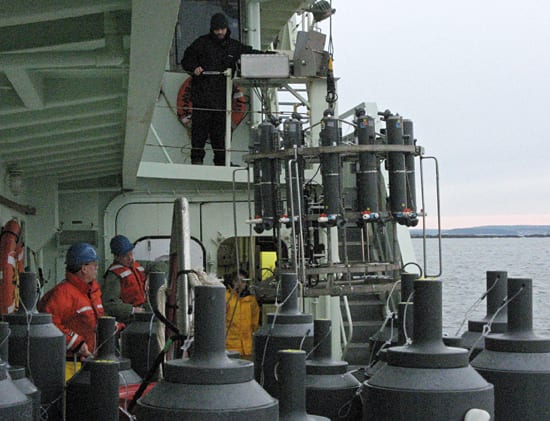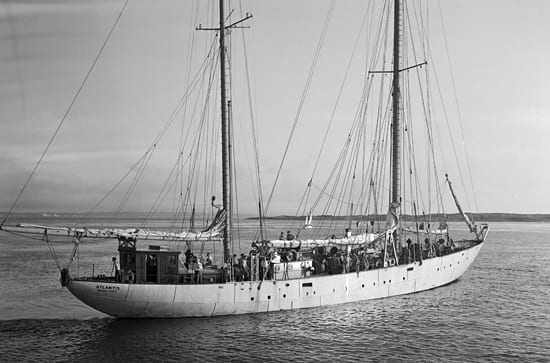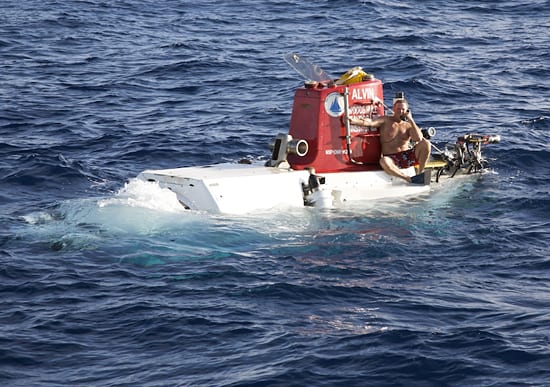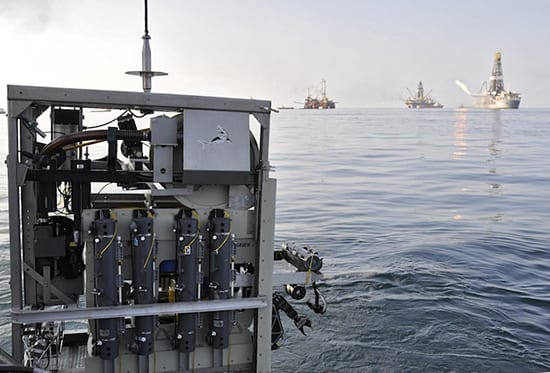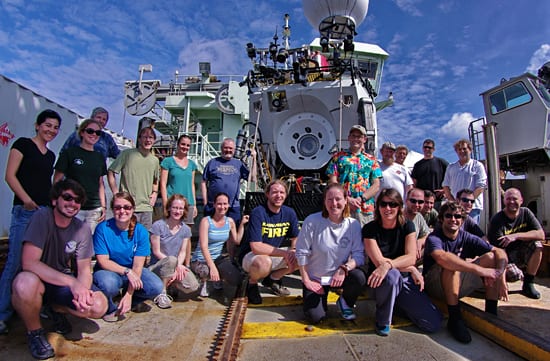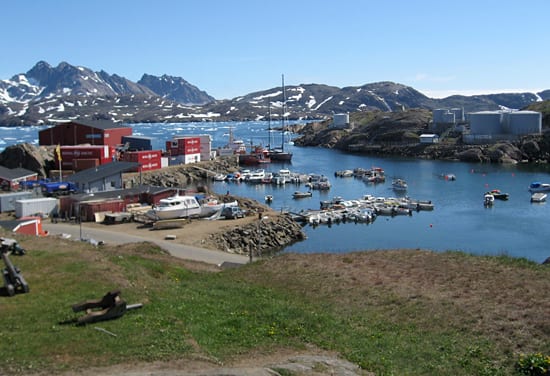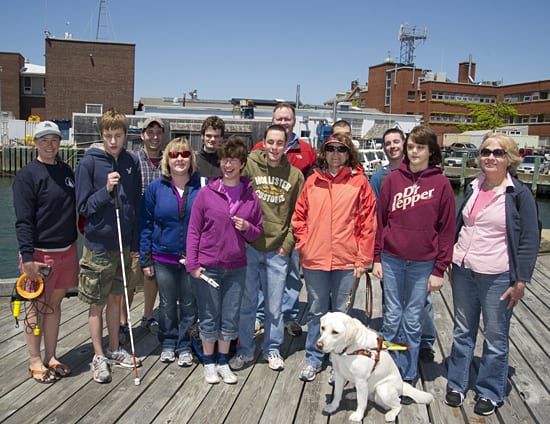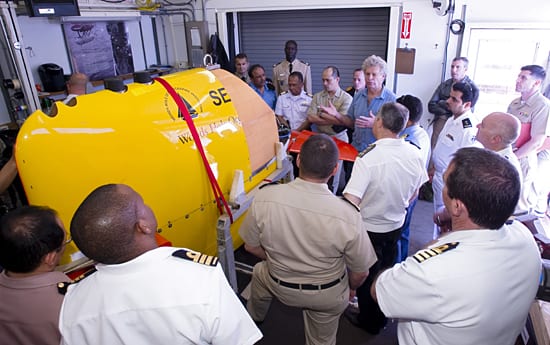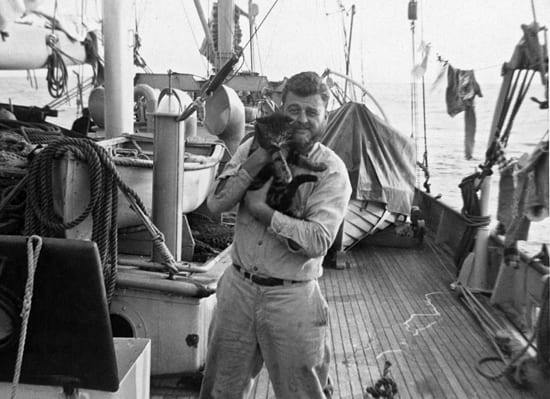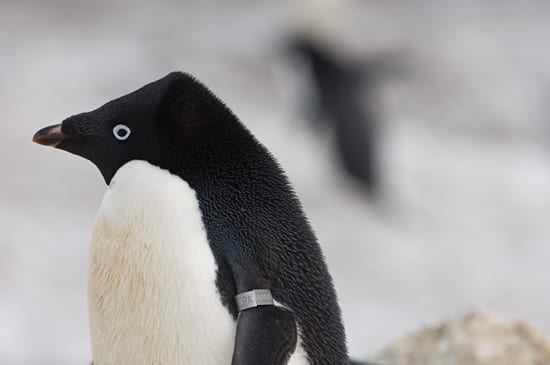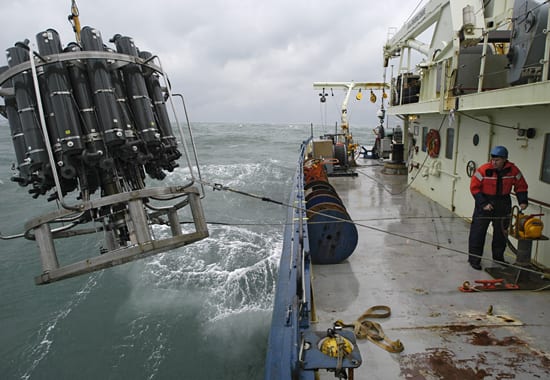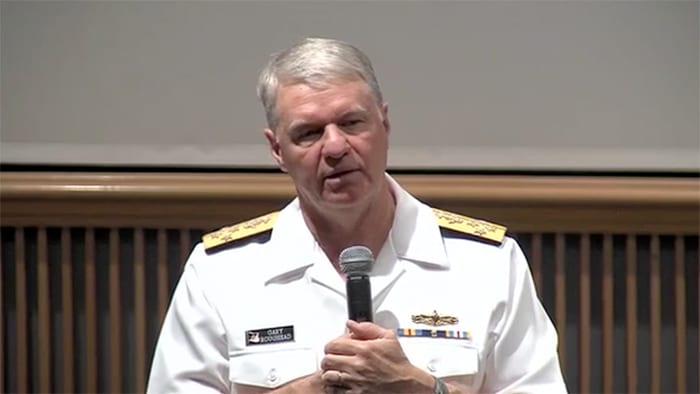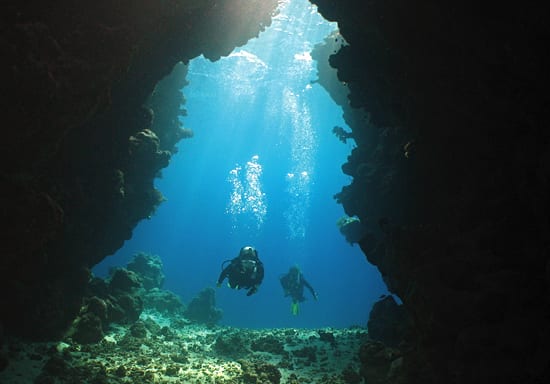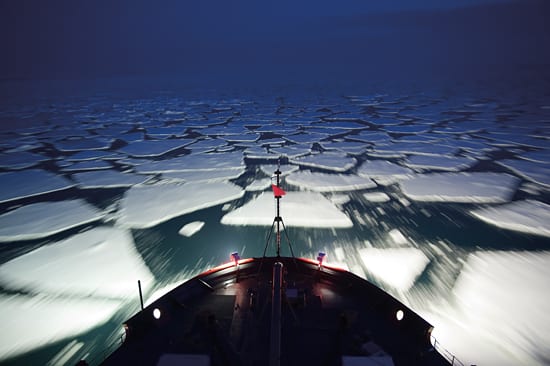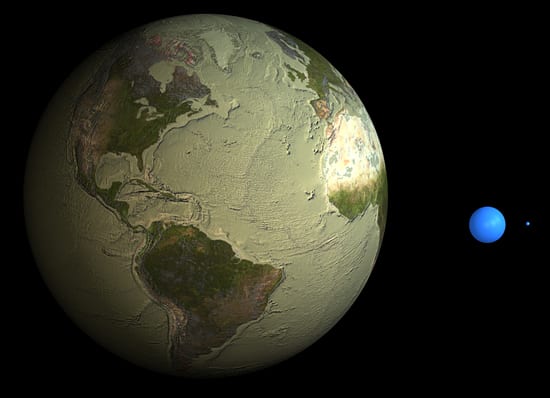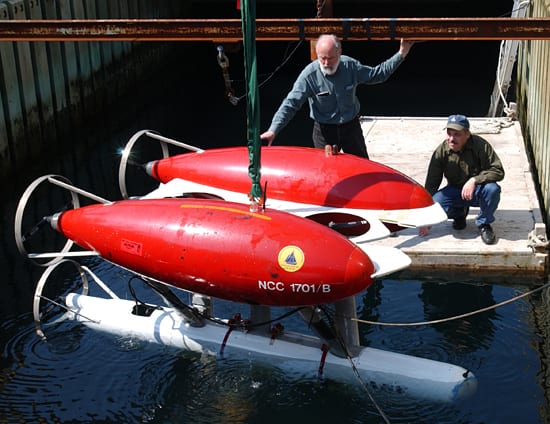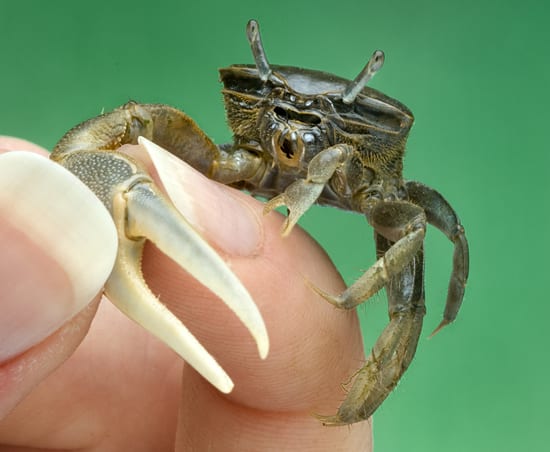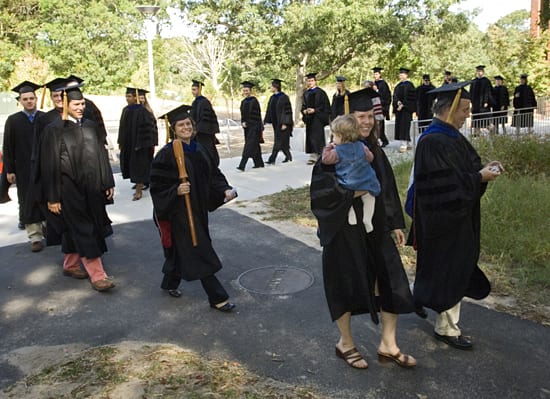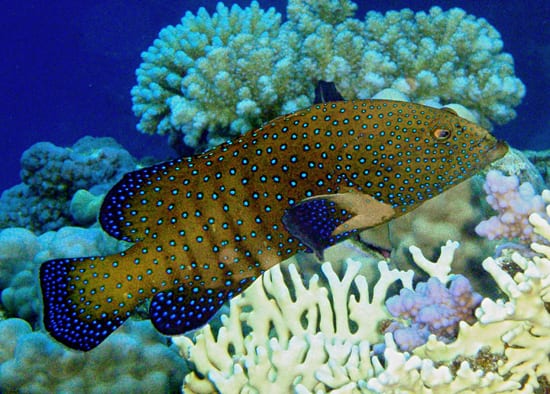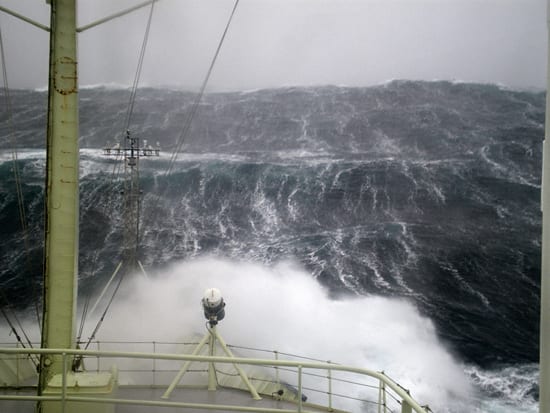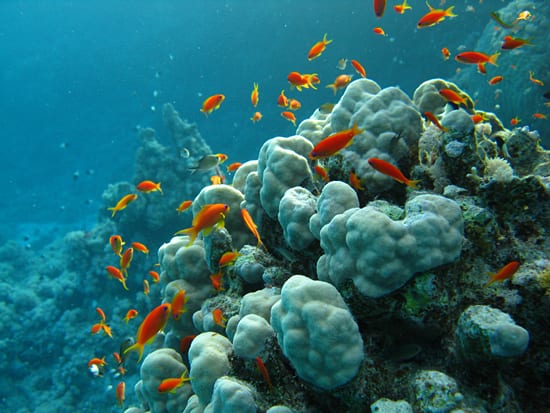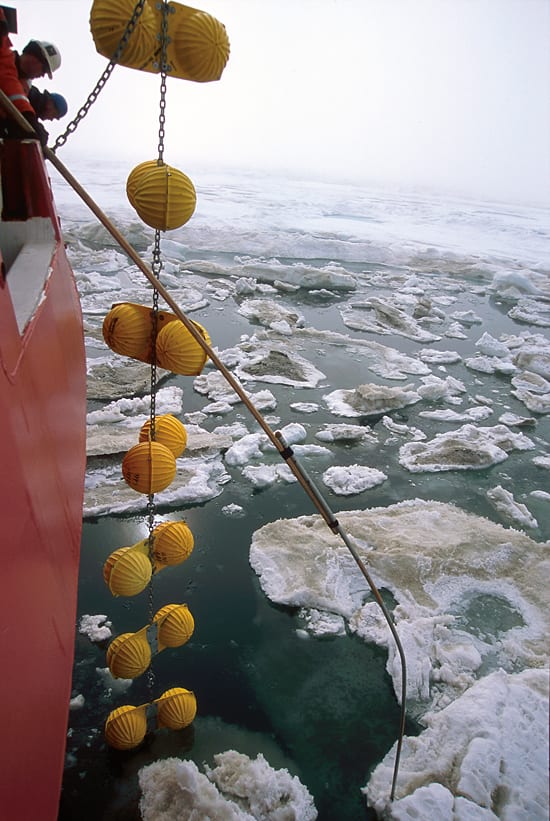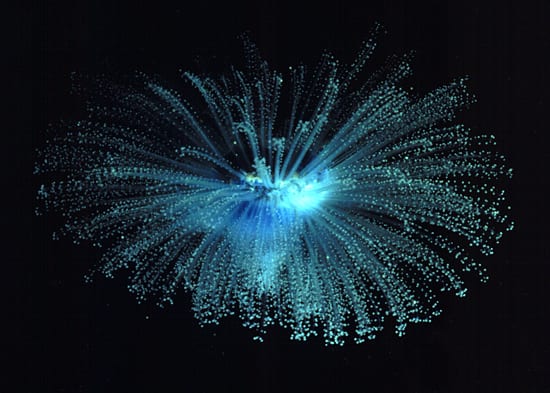Multimedia Items
Studying Red Tide in the Gulf of Maine
Researchers Jefferson Turner of UMass Dartmouth, left, foreground, Dennis McGillicuddy of WHOI (green jacket), and winch operator John Gaylord of WHOI, above, deploy a CTD rosette system on R/V Oceanus…
Read MoreEarly days
Atlantis—the first Woods Hole Oceanographic Institution research vessel—departs the dock in July of 1947. This early cruise to Bikini Atoll yielded sediment cores from Henry Stetson’s coring device, echosounder profiles…
Read MoreReady for pickup, please
RV Atlantis steward Carl Wood chats with the Alvin pilot inside the sub during a recovery in the Equatorial Pacific. Launched in 1964, the sub’s most famous exploits include exploring…
Read MoreOn Site in the Gulf
WHOI Senior Scientist Cabell Davis, together with MIT/WHOI Joint Program graduate student Nick Loomis, this week deployed their holographic plankton camera on a remotely operated vehicle (ROV) from the M/V…
Read MoreSaving Sentry
These cruise members, including the Sentry team and the Alvin group—shown during a recent Atlantis cruise near the Galapagos Islands—breathed a collective sigh of relief after a dramatic resuscitation of…
Read MoreHome for the summer
The picturesque port of Tasiilaq in southeastern Greenland served as home base for scientists investigating conditions in a glacial fjord for two months in 2008. Led by physical oceanographer Fiamma…
Read MoreUnsung heroine brings science to students
Amy Bower (in orange jacket), of the WHOI Physical Oceanography department, hosts a group of students from the Perkins School for the Blind. Bower, who is legally blind, collaborates with…
Read MoreA commanding audience
Students in the Naval Command College get a firsthand view of the autonomous underwater vehicle Sentry from WHOI engineer Rod Catanach during a recent visit to the Institution. The NCC…
Read MoreAll paws on deck
Atlantis sheltered a number of cats over the years, including this one held by Atlantis second mate (and photographer) Don Fay during a 1935 research cruise. One cat deserted a…
Read MoreA superbreeder?
During a 2007 expedition to Antarctica, scientists travelled to Ross Island to study the biology of the frigid, bountiful Ross Sea through the eyes of Adélie penguins. Small aluminum identification…
Read MoreRoughing it
WHOI physical oceanographer Glen Gawarkiewicz recovers a CTD rosette in heavy weather north of Cape Hatteras, North Carolina in 2005. Gale or storm conditions prevailed during the entire cruise, damaging…
Read MoreVisit from Chief of Naval Operations
CNO Admiral Gary Roughead talking to WHOI staff in Redfield. Originally published online June 10, 2010
Read MoreSearching for snapper fish
MIT/WHOI Joint Program graduate student Kelton McMahon (front) and WHOI research assistant Leah Houghton enter a large underwater cavern on a Red Sea coral reef off Alith, Saudi Arabia in…
Read MoreInto thin ice
Bow lights show the way as the U.S. Coast Guard icebreaker Healy streaks through slim pancake ice in the nighttime Bering Sea. After long, dark winters, sunlight returns to the…
Read MoreHappy World Oceans Day
Earth is an ocean planet. More than 70% of its surface is covered by ocean with an average depth of just over two miles. But how much water is there…
Read MoreAdieu to ABE
The Autonomous Benthic Explorer, fondly known as ABE, was lost at sea March 5, 2010, on an expedition off the coast of Chile during its 222nd research dive. Built as…
Read MoreCrabby Investigators
For decades, marine chemists and ecologists have been wondering: does the oil that was spilled into a Cape Cod salt marsh in 1969 still have an impact on the wildlife…
Read MoreHolography and Oceanography
By Ari Daniel :: Originally published online June 5, 2010
Read MoreHere come the graduates
Margaret Boettcher (carrying belaying pin) and Joanna Wilson (carrying daughter Raynham) make their way in procession to the 2005 commencement ceremony of the MIT/WHOI Joint Program in Oceanography and Applied…
Read MoreSwimming peacock
A peacock grouper (Cephalopholus argus) swims along the Farasan Banks in June 2009. WHOI biologist Simon Thorrold and international colleagues were there to conduct an ecological survey of corals and…
Read MoreA view from the bridge
It’s just another relatively routine autumn day in the North Atlantic for the WHOI-operated research vessel Knorr. On an expedition to the Irminger Sea in October 2007, scientists and crew…
Read MoreRed Sea reef
Reef-building corals create habitats for many other organisms. The coral reefs of the Red Sea are highly diverse and unique in the world, providing shelter and sustenance for abundant fishes…
Read MoreDangerous ice
During a four week expedition aboard the U.S. Coast Guard Cutter Polar Star in the summer of 2002, scientists and sailors battled Arctic Ocean ice to observe one of the…
Read MoreBlue rays
Is it fireworks, a flower, or a 1970’s fiber-optics lamp? None of the above!—it’s a colonial ocean animal related to jellyfish, called Porpita porpita. The colony has radiating blue “tentacles”—really…
Read More
